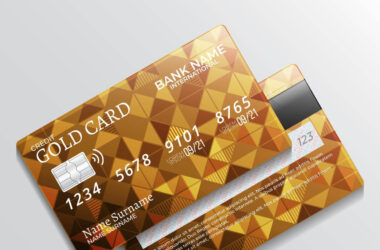Internet banking, also known as online banking or e-banking, is the process of performing various banking activities over the Internet. This allows customers of a bank or other financial institution to manage their accounts and conduct financial transactions online, without having to physically visit a bank branch.
The history of Internet banking can be traced back to the early 1980s when telecommunication networks were being developed for the financial industry. Since then, internet banking has become increasingly popular, with millions of people worldwide now using this service.
Today, internet banking is an essential part of modern-day banking. It provides customers with convenience, flexibility, and efficiency in managing their finances. With Internet banking, customers can access their accounts at any time and from anywhere, making it easier for them to monitor their finances and perform transactions on the go.
In the following sections, we will discuss the benefits, features, and security measures of Internet banking in more detail.
Benefits of Internet Banking
Internet banking offers a range of benefits to its users. Let’s take a closer look at some of these benefits:
1. Convenience
Internet banking provides a high level of convenience to its users. With 24/7 access to banking services, customers can perform banking tasks at any time of the day, without having to worry about the opening and closing times of bank branches. This makes it easier for busy individuals who cannot visit a bank during regular business hours. Additionally, internet banking eliminates the need to physically visit the bank, saving time and reducing travel costs.
2. Flexibility
Internet banking provides users with a high level of flexibility. Customers can perform banking tasks from anywhere, as long as they have an internet connection. This allows users to manage their accounts while on the go, whether they are at work, at home, or traveling. Internet banking also offers multiple account management options, making it easier for users to manage all their accounts from a single platform.
3. Efficiency
Internet banking offers faster transactions and payments compared to traditional banking methods. Transactions are processed quickly, reducing the time it takes for funds to be transferred from one account to another. Additionally, internet banking allows customers to monitor their accounts online and set up alerts for activities such as incoming payments, balance updates, and account activity. This allows users to stay on top of their finances and detect any potential issues in real time.
Features of Internet Banking
Internet banking offers a range of features to its users that make managing finances more convenient and efficient. Let’s take a closer look at some of the key features of Internet banking:
1. Account Management
Internet banking provides users with a range of account management options. This includes the ability to check account balances, view transaction histories, and make bill payments and transfers. You can also set up automated payments and transfers, making it easier to manage regular expenses such as rent or utility bills.
2. Investment Management
Internet banking also provides you with investment management options. You can buy and sell stocks and bonds through your online account and also track your investment portfolio performance. This makes it easier for you to manage your investments and make informed decisions about your finances.
3. Loan Management
Internet banking allows you to manage your loans online. This includes applying for loans, calculating interest and payment amounts, and making loan repayments. You can also view your loan balances and payment histories, making it easier to stay on top of your loan payments.
Security Measures in Internet Banking
As with any online service that involves sensitive personal and financial information, security is a top priority for Internet banking. Here are some of the key security measures that are in place to protect Internet banking users:
1. User Authentication
User authentication is a process that verifies the identity of the user before granting access to their account. Internet banking platforms typically use a combination of usernames and passwords, security questions, and one-time verification codes to authenticate users. This ensures that only authorized users have access to their accounts and helps prevent unauthorized access.
2. Encrypted Data Transmission
Encryption is the process of converting information into a coded language that can only be read by authorized parties. Internet banking platforms use encryption to protect user data during transmission. This means that all data exchanged between the user’s computer and the bank’s server is scrambled and cannot be read by hackers or other third parties.
3. Two-Factor Authentication
Two-factor authentication is a process that adds an extra layer of security to user authentication. In addition to entering their username and password, users are required to provide a second form of authentication, such as a fingerprint scan or a one-time code sent to their mobile device. This ensures that even if a hacker has stolen your login credentials, you cannot gain access to your account without providing the second form of authentication.
How to Get Started with Internet Banking
If you’re interested in taking advantage of the convenience and efficiency of Internet banking, here are some steps to help you get started:
1. Choose the Right Bank or Financial Institution
The first step to getting started with Internet banking is to choose the right bank or financial institution. Look for a bank or credit union that offers online banking services that meet your needs. Consider factors such as fees, interest rates, account types, and customer service when making your decision. If you need a bank that gives you all you need and more then get started with Access Bank’s Internet banking system today.
2. Register for Online Banking
Once you’ve chosen a bank or financial institution, you’ll need to register for online banking. This typically involves filling out an application and providing some personal information, such as your name, address, and social security number. You may also be required to provide a valid email address and create a username and password.
3. Navigate the Internet Banking Platform
After you’ve registered for online banking, you can log in to the Internet banking platform to start managing your finances. Take some time to explore the platform and get familiar with its features. You can typically view your account balances, transfer funds between accounts, pay bills, and access other financial services through the platform.
Some Internet banking platforms also offer mobile apps that allow you to manage your finances on the go. If you prefer to use a mobile app, be sure to download it from a reputable source and use strong passwords to protect your account.
Access Bank – Internet Banking
The Access Bank Internet banking platform is designed to make banking more convenient, efficient, and accessible. Here are some features and benefits of Access Bank Internet banking:
- 24/7 Access to Banking Services: With Access Bank Internet banking, you can access your account and perform transactions at any time of the day, from anywhere in the world.
- Account Management Options: Access Bank Internet banking allows you to manage your accounts from a single platform. You can view your account balances, and transaction history, and perform transactions such as transfers, bill payments, and more.
- Secure and Encrypted Transactions: Our Internet banking uses industry-standard security measures to protect your personal and financial information. All transactions are encrypted to ensure that your data is kept safe from hackers and other unauthorized parties.
- Mobile Banking: We also offer a mobile banking app that allows you to access your account on the go. The app is available for download on Android or iOS devices.
- Investment Management: The i-banking offers investment management services that allow you to invest in stocks, bonds, and other financial products.
- Loan Management: You can also apply for loans, make payments, and manage your loan accounts through the Internet banking platform.
To get started with Access Bank Internet banking, you’ll need to register for online banking. You can do this by visiting the Access Bank website or contacting your nearest branch. Once you’re registered, you can log in to the Internet banking platform and start managing your finances more conveniently and efficiently.
Conclusion
Internet banking has become an essential part of modern-day banking, providing customers with a range of benefits and advantages. From 24/7 access to banking services to faster transactions and online account monitoring, internet banking offers convenience, flexibility, and efficiency.
Additionally, internet banking is secure, with measures in place to protect users’ personal and financial information. By using user authentication, encrypted data transmission, and two-factor authentication, banks ensure that their users’ data is kept safe from hackers and other unauthorized parties.
If you haven’t tried Internet banking yet, it’s worth considering. Access Bank is a reputable financial institution that offers a comprehensive Internet banking platform with a range of features and services to help you manage your finances. By choosing the right bank, registering for online banking, and getting familiar with the platform, you can start enjoying the benefits of Internet banking today. So why not give it a try?











3
555
555
OkGamesJili is the real deal. Jili games are bomb! Been having a blast playing. Sulit! Try it okgamesjili.
Alright, so I’ve been using 40winbet for a bit now. The odds are decent, and they pay out pretty quick, which is a huge plus! Give it a shot 40winbet.
Yo! Looking for the h555gameapk? Found it at h555gameapk.net. Downloading now, wish me luck! h555gameapk
Every paragraph you write feels layered and immersive, much like navigating the untamed landscapes of wild ape 3258, where each spin can lead to unexpected rewards.
Безопасный процесс авторизации вход на кракен требует решения TOTP кода из приложения аутентификатора и дополнительного PIN для критических операций на платформе.
Uwielbiasz hazard? nv casino bonus: rzetelne oceny kasyn, weryfikacja licencji oraz wybor bonusow i promocji dla nowych i powracajacych graczy. Szczegolowe recenzje, porownanie warunkow i rekomendacje dotyczace odpowiedzialnej gry.
Proportional growth when you buy tiktok likes and views maintains ratios. Coordinated delivery ensures healthy engagement percentages preventing suspicious patterns that might trigger platform scrutiny.
Новинний портал Ужгорода https://88000.com.ua головні події міста, політика, економіка, культура, спорт та життя городян. Оперативні новини, репортажі, інтерв’ю та аналітика. Все важливе про Ужгород в одному місці, зручно з телефону та комп’ютера.
A cozy hotel Bianca Resort & Spa Kolasin for mountain lovers. Ski slopes, trekking trails, and local cuisine are nearby. Rooms are equipped with amenities, Wi-Fi, parking, and friendly staff are available to help you plan your vacation.
Современный протокол обеспечивает kraken darknet onion через Ed25519 эллиптические кривые для генерации адресов с существенно более высокой безопасностью по сравнению со старыми версиями.
Техническая проблема возникает когда не работает кракен ссылка из-за устаревшего адреса, DDoS атаки на серверы или блокировки Tor подключения интернет провайдером.
Casino utan registrering https://casino-utan-registrering.se bygger pa en snabbare ide: du hoppar over kontoskapandet och gar direkt in via din bank-ID-verifiering. Systemet ordnar uppgifter och transaktioner i bakgrunden, sa anvandaren mots av en mer stromlinjeformad start. Det gor att hela upplevelsen far ett mer direkt, tekniskt och friktionsfritt upplagg utan extra formular.
I casino crypto https://crypto-casino-it.com sono piattaforme online che utilizzano valute digitali per transazioni rapide e sicure. Permettono di vedere in pratica i vantaggi della blockchain: trasparenza dei processi, assenza di intermediari, trasferimenti internazionali agevoli e un’interfaccia moderna, pensata per un’esperienza tecnologica degli utenti.
Casino utan svensk licens https://casinos-utan-licens.se ar onlineplattformar som drivs av operatorer med licens fran andra europeiska jurisdiktioner. De erbjuder ofta ett bredare utbud av tjanster och anvander egna regler for registrering och betalningar. For spelare innebar detta andra rutiner for sakerhet, verifiering och ansvarsfullt spelande.
Free Online Jigsaw Puzzle https://augustktxcf.verybigblog.com/37798514/challenge-your-brain-with-digital-jigsaw-experiences play anytime, anywhere. Huge gallery of scenic photos, art and animals, customizable number of pieces, autosave and full-screen mode. No registration required – just open the site and start solving.
Explore hyperliquid trading and gain unlimited access to a modern, decentralized market. Trade derivatives, manage your portfolio, utilize analytics, and initiate trades in a next-generation ecosystem.
Choose hyperliquid trade as a convenient tool for trading and investing. The platform offers speed, reliability, advanced features, and fair pricing for cryptocurrency trading.
Use trade on hyperliquid for stable and efficient trading. The platform combines security, high liquidity, advanced solutions, and user-friendly functionality suitable for both beginners and professional traders.
Discover trading on hyperliquid a platform for fast and secure trading without intermediaries. Gain access to innovative tools, low fees, deep liquidity, and a transparent ecosystem for working with digital assets.
Choose hyperliquid — a platform for traders who demand speed and control: over 100 pairs per transaction, flexible orders, HL token staking, and risk management tools. Support for algorithmic strategies and advanced analytics.
Check out hypertrade crypto, a modern DEX with its own L1: minimal fees, instant order execution, and on-chain transparency. Ideal for those who want the speed of a CEX and the benefits of decentralization.
Открываешь бизнес? открытие бизнеса в оаэ полный пакет услуг: консультация по структуре, подготовка и подача документов, получение коммерческой лицензии, оформление рабочих виз, помощь в открытии корпоративного счета, налоговое планирование и пострегистрационная поддержка. Гарантия конфиденциальности.
Хотите открыть компанию оаэ? Предоставим полный комплекс услуг: выбор free zone, регистрация компании, лицензирование, визовая поддержка, банковский счет и бухгалтерия. Прозрачные условия, быстрые сроки и сопровождение до полного запуска бизнеса.
Предлагаем учреждение холдингов оаэ для международного бизнеса: подбор free zone или mainland, разработка структуры владения, подготовка учредительных документов, лицензирование, банковское сопровождение и поддержка по налогам. Конфиденциальность и прозрачные условия работы.
Хотите открыть счёт? открытие счета в оаэ Подбираем оптимальный банк, собираем документы, готовим к комплаенсу, сопровождаем весь процесс до успешного открытия. Поддерживаем предпринимателей, инвесторов и резидентов с учётом всех требований.